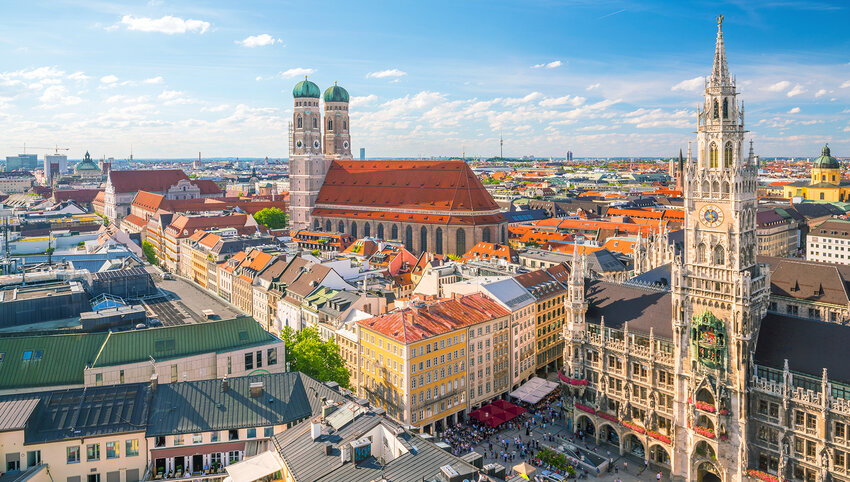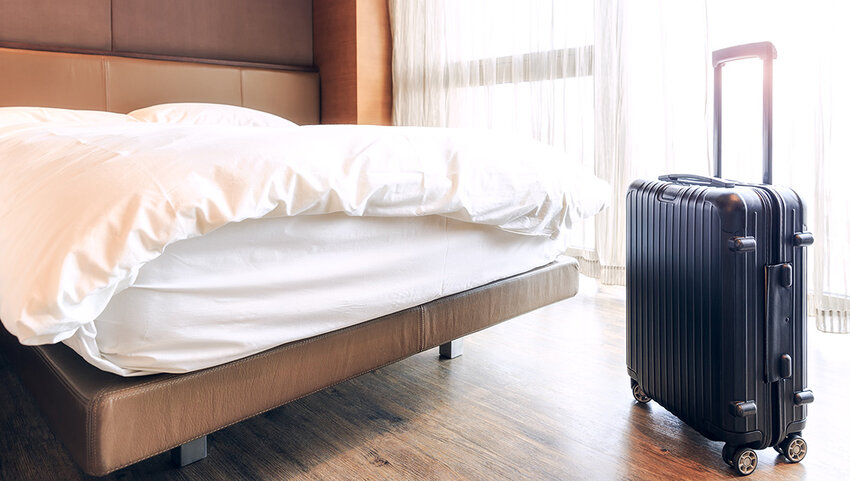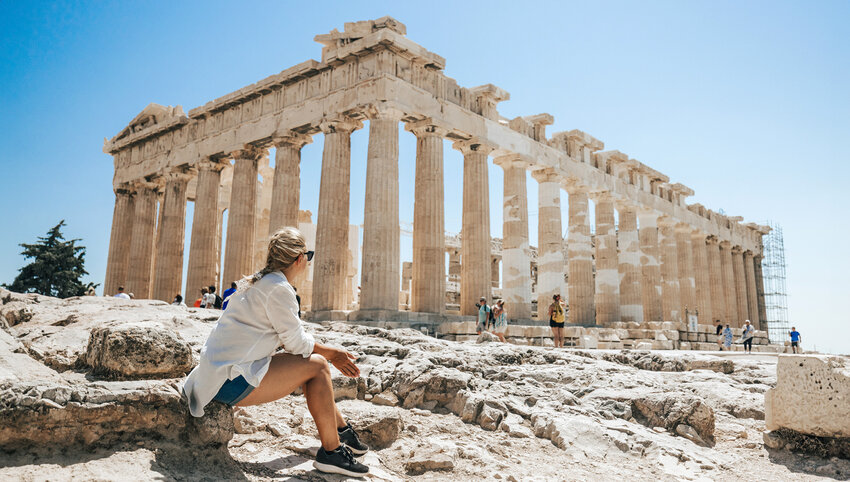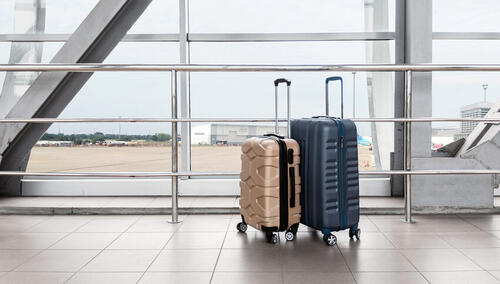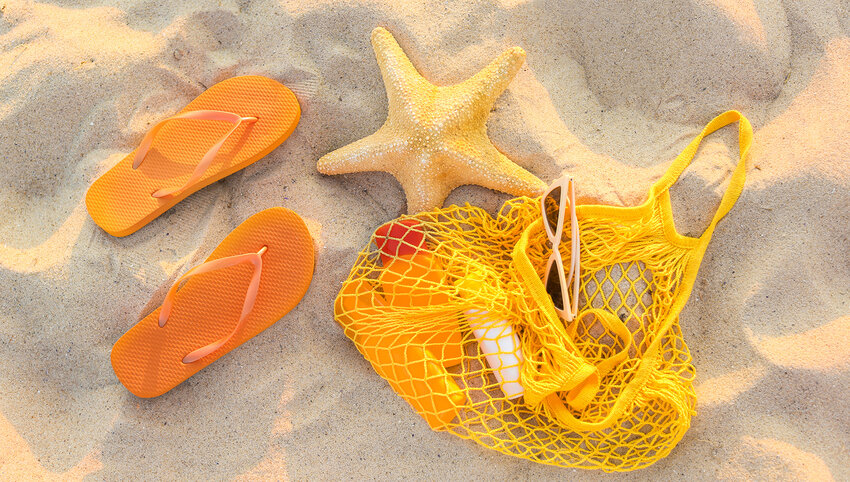Oktoberfest, Germany’s most famous beer festival, is a fall highlight and 2023 marks the 188th year this popular event has been held. It takes place annually in Munich from mid-September to early October. Boasting cavernous beer tents, food stalls, and fairground rides, it attracts more than five million visitors from across the world every year. Want to know more about this famed international event? Here's everything you need to know about Germany’s Oktoberfest.
The History
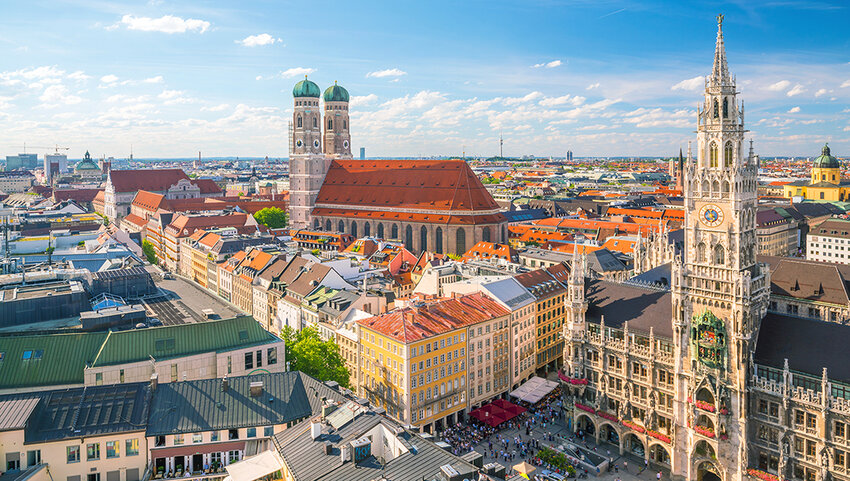
Though tourists call it Oktoberfest, locals know it as the Wiesn. The name originates from Theresienwiese, a large open space within easy reach of the city center where the festivities happen. Today’s mammoth event began as a wedding reception. When Bavaria’s Crown Prince Ludwig and Princess Therese von Sachsen-Hildburghausen got married in 1810, they wanted to celebrate with the whole city. They threw a party for the people of Munich which went on for five days. The citizens had such a great time that city authorities decided to stage another one. Fast forward more than 200 years and it’s become the most famous celebration in the whole of Germany.
The Kick-Off
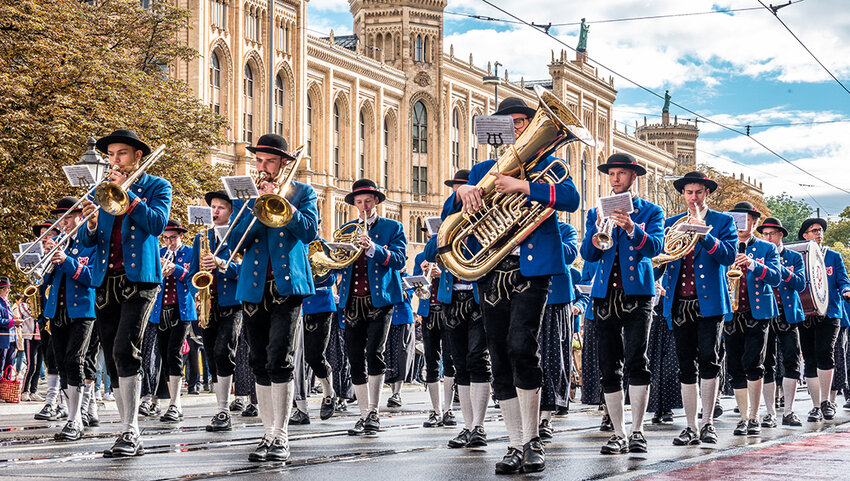
Ceremony and tradition make Oktoberfest special. On the first day of the festival, the mayor and the city’s brewery landlords set off from Sonnenstraße-Schwanthalerstraße and process through the streets of Munich towards the Theresienwiese. A crowd gathers to cheer and watch the lavishly decorated floats, marching bands, horse-drawn carriages, and drays laden with beer barrels. The mayor alights and ducks inside the Schottenhamel beer tent to carry out an important duty: getting the beer to flow. Everyone counts the number of times the keg is hit – once, remarkably, it took only two taps to free the amber liquid. Once successful, the mayor shouts “O’zapt ist!” which is a signal for all those present that the festival has started and the drinking can begin.
The Big Procession
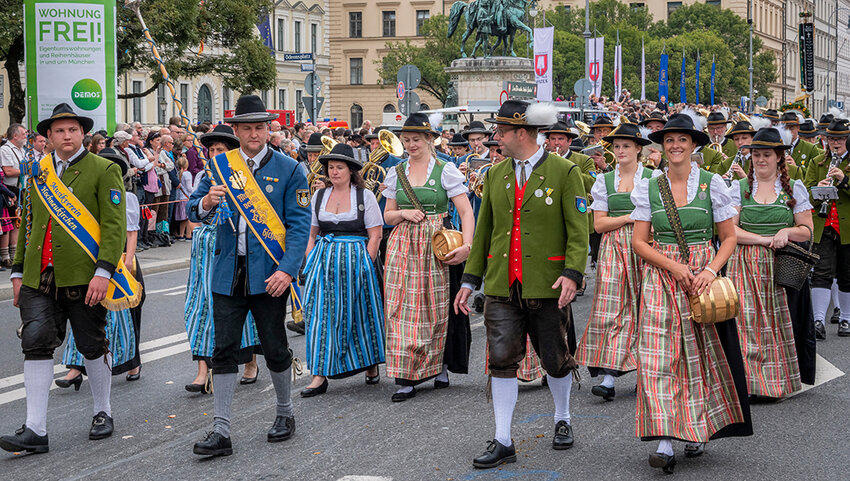
On day two of Oktoberfest, crowds line the streets again, this time for the Trachten- und Schützenzug (the Costume and Riflemen’s Parade). A huge parade winds its way along a four-and-a-half-mile route from Maximilianstraße to the Wiesn. Ticket-holders can watch from raised stands that are temporarily erected on the pavements. It’s a spectacular sight, as around 9000 people from around the world participate in the procession. They walk alongside musicians, riflemen, floats and even cows wearing floral headdresses. Leading the way is the Münchner Kindl, a young girl on horseback who serves as the city’s mascot. To qualify for the selection process, she and her parents and grandparents must have been born in Munich.
The Tents
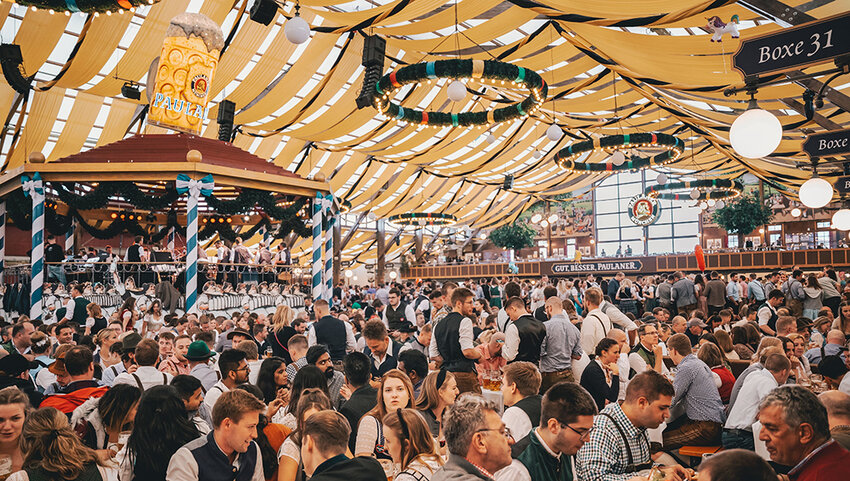
Giant tents are erected at the Wiesn, and within these canvas walls, wait staff serve more than seven million liters of beer in large steins. To get their attention, you’ll need a seat. You can try to reserve in advance as early as spring (recommended if you intend to visit during the evenings or at weekends). Alternatively, a few spaces are kept back for walk-ins, so you can chance your luck and wait until one becomes free. The atmosphere inside the tents is loud and raucous, with plenty of good-natured singing. You’ll hear the beer-drinking anthem “Ein Prosit” over and over – everyone joins in with gusto as they belt out the familiar lyrics to this traditional song. Line your stomach with traditional Bavarian foods such as weisswurst (white sausage), brez’n (soft pretzels), käsespätzle (cheese noodles) and sauerkraut (pickled cabbage).
The Beer
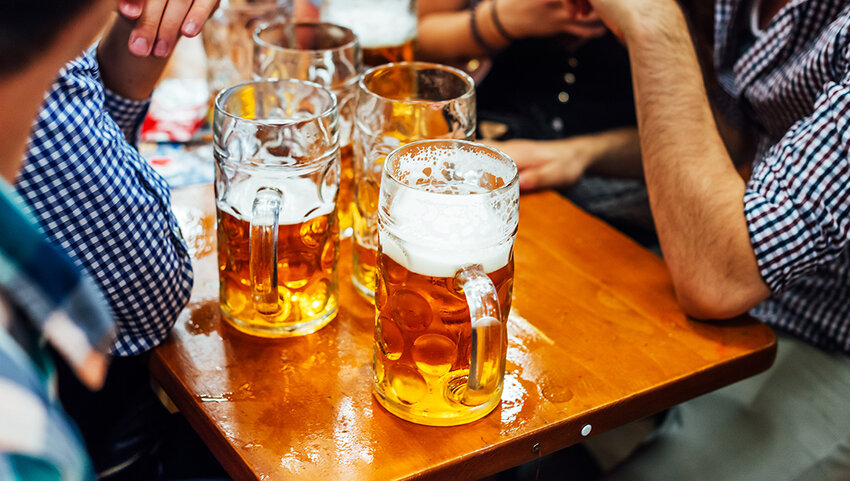
Only six breweries are permitted to sell beer at Oktoberfest. These are all found within Munich’s city limits and conform to strict quality control methods that fall under the Reinheitsgebot (purity law) introduced in the year 1516. On site at Oktoberfest, you’ll only see beer from the Augustiner-Bräu, Hacker-Pschorr-Bräu, Löwenbräu, Paulaner, Spatenbräu, Staatliches and Hofbräu-München breweries. Of course, with all those visitors to accommodate, there are considerably more than six tents; you’ll find 17 large and 21 small. Whichever you find yourself in, when you’ve drained your glass, don’t think about trying to smuggle it out. Stewards are experts in recovery, confiscating 112,551 of them in 2022. Shell out for an official souvenir instead.
The Costumes
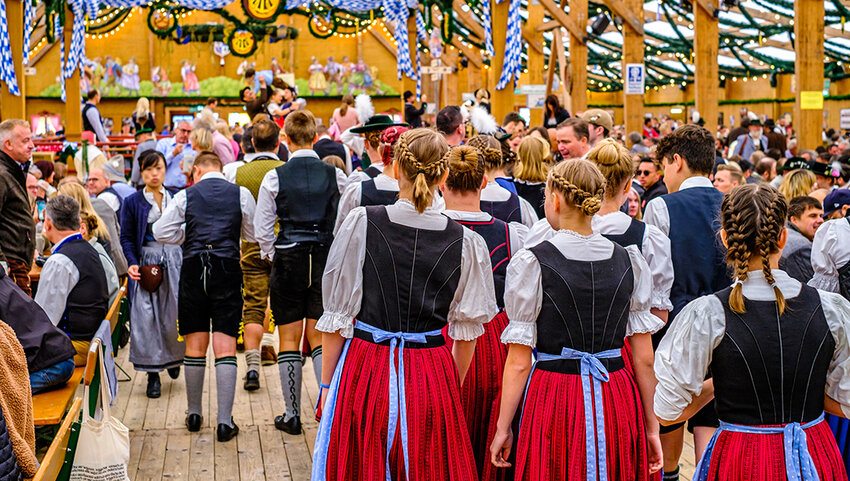
Though there’s no requirement for visitors to dress up, you’ll see a lot of people wearing local costume. Men young and old wear lederhosen, tight deerskin shorts with an embroidered bib and braces, and sport loferls (calf warmers knitted from wool) above traditional shoes called haferls. Round the waist they string a charivari, a decorative silver chain. When headgear is worn, it’s often a felt hat with a feather in its brim. The female costume is equally impressive. Pretty dirndls teamed with white blouses are proudly worn by women of all ages. If it’s chilly, a Tyrolean felt jacket is the ideal outer layer. No matter what the weather, before striking up a conversation look closely at the apron; how it’s tied determines whether the wearer is in a relationship or not.
The Entertainment
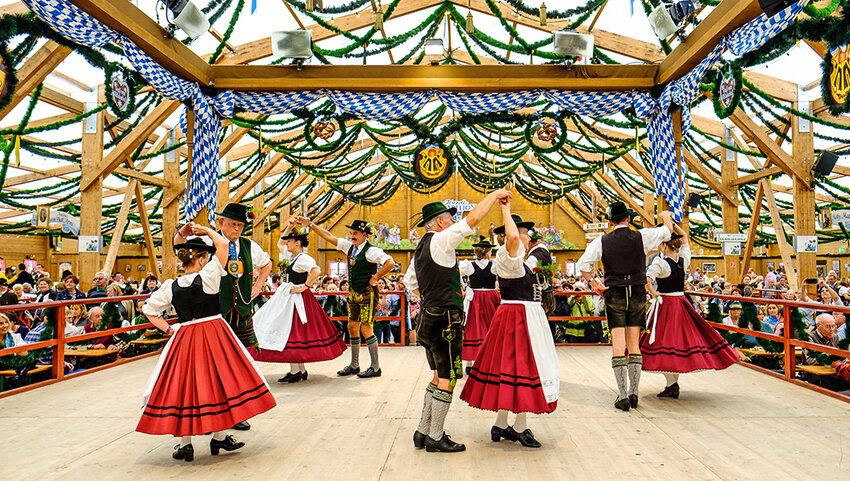
Head to the Olde Wiesn for the historic funfair rides that help make a beer festival a family-friendly event. The Kettenflieger Kalb has spun riders into the air on chain chairs for more than a century. The best view is undoubtedly from the Willenborg Ferris wheel which has been a fixture of the Wiesn since 1979. Measuring 164 feet high, when each of its 40 gondolas reaches the top, passengers are treated to a 360 degree panorama. It provides a unique perspective on Munich’s old town; on a clear day, the Bavarian Alps are often visible in the distance. Meanwhile, over in the museum tent, memorabilia connected with earlier Oktoberfests is on display. Children will love learning how the barrel organ works and get a close-up look at a penny farthing bicycle. In the Festzelt Tradition tent, brass band music typical of the region accompanies performances by costume societies from across Bavaria. And in 2022, organizers introduced a folk singing tent called the Schützenlisl where singalongs are encouraged.

